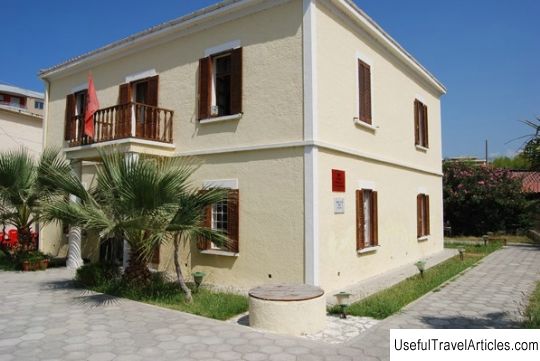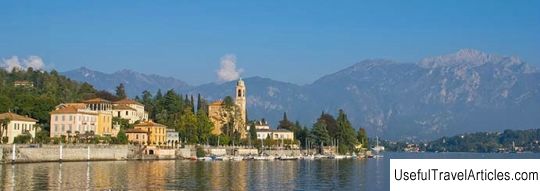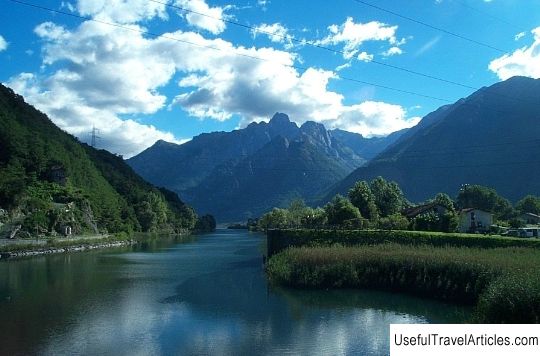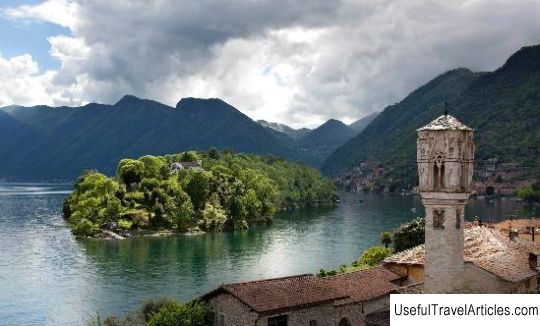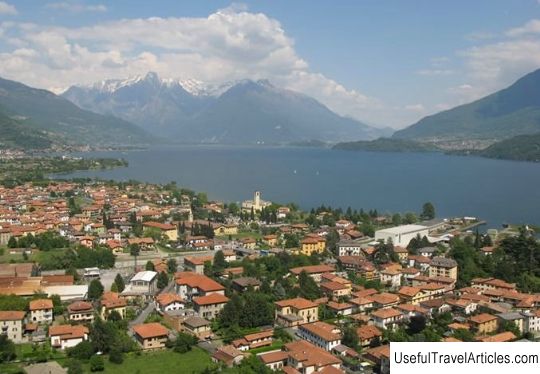Bellagio description and photos - Italy: Lake Como
Rating: 8,2/10 (1930 votes) 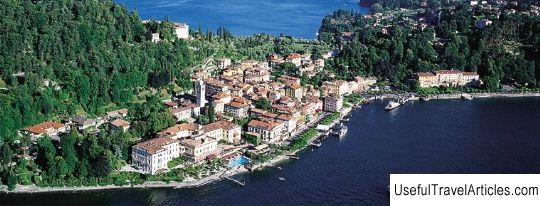
Bellagio description and photos - Italy: Lake Como. Detailed information about the attraction. Description, photographs and a map showing the nearest significant objects. The name in English is Bellagio. Photo and descriptionBellagio is a town in the province of Como, which is located at the intersection of the three branches of the Y-shaped Lake Como. It stands at the very tip of the peninsula, separating the two southern branches of the lake, and to the north of Bellagio, on the other side, the majestic Alps rise. Bellagio, which is often called the "pearl of Como", was known back in the era of Ancient Rome. Its strategically important location and amazingly beautiful landscapes have played a significant role in the history of the city. Archaeological finds indicate that the first settlements on the territory of modern Bellagio appeared about 30 thousand years ago. But only in the 7-5th centuries BC. here were built an ancient Roman castellum (fortress), a temple and a kind of stock exchange, which served the numerous surrounding villages. The Romans began to grow olives and laurels here - and today these trees grow in abundance along the shores of the lake. Pliny the Younger in the 1st century AD described Bellagio as a resting place for noble Romans. After the occupation of northern Italy by the Lombards, fortifications were built in Bellagio. It is believed that around 1100 the city became a free commune, and its dependence on the city of Como was formal. However, the strategically advantageous location of Bellagio made it one of the most important settlements on the lake and the subject of constant strife. At the end of the 13th century, the city became the property of the powerful Visconti family and became part of the Duchy of Milan. Then, in the 16th century, a two-hundred-year Spanish rule began - it was then that the steps leading from the Gudjate region to Suiru were built. In those years Bellagio, due to its geographic location, it flourished. It was no less important point during the reign of Napoleon. In the 18th century, Count Francesco Melzi d'Eril, Duke of Lodi and Vice President of the Cisalpine Republic, built his summer residence in Bellagio. Thanks to the appearance of his luxurious villa, the entire waterfront of the city has been turned into one of the most elegant and sophisticated promenades in Italy. There were built roads for horse carriages that connected villas and palaces. Bellagio's fame as a coastal resort has spread far beyond the borders of the Lombardo-Venetian Kingdom. Even the Austrian Emperor Francis I wished to visit this city in 1816, and then, in 1825, returned here again. In 1838 Bellagio received Emperor Ferdinand I, Archduke Rainer and Minister Metternich, who arrived here on "Lario" - the first steamer launched on Lake Como. Bellagio was one of the most popular holiday destinations among the noble families of Lombardy. Luxurious villas were built here, gardens and parks were laid out, luxury shops were opened, and crowds of tourists filled the streets of the city already in the 19th century. The first hotel was opened in 1825 - "Hotel Genazzini". Today it is tourism that is the main economic sector of this coastal resort. Perhaps the most popular attraction of Bellagio is the aforementioned Villa Melzi d'Eril - a luxurious building facing the lake. It was built in 1808 - 1815 by the architect Giocondo Albertolli. The villa was decorated and furnished with the help of the greatest craftsmen and artists of their time - Appiani, Bossi, Canova, Comolli, Manfredini. An English garden is laid out in front of the villa, harmoniously inscribed in the surrounding landscape. In it you can see a real Venetian gondola, two priceless ancient Egyptian statues, rare exotic plants, century-old trees, hedges of camellias, groves of azaleas and giant rhododendrons.         We also recommend reading Maritime Museum description and photos - Bulgaria: Kavarna Topic: Bellagio description and photos - Italy: Lake Como. |
